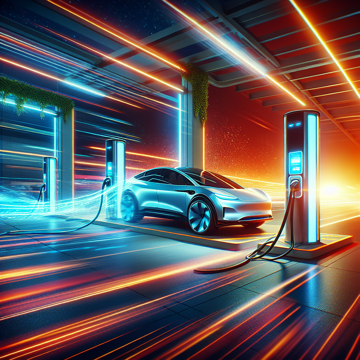Supercharged Brains, Robo-Factories, and the Great Battery War: Tech’s Wildest Frontiers Are Colliding—And You’re Already in the Middle

The future is coming at us so fast, it’s practically breaking the speed of light—and you might not even notice until your car charges in less time than it takes to tie your shoes, or your next email is literally beamed out of someone’s mind.
Let’s start with the brain. While most of us are still mashing keyboards, some pioneers are skipping the fingers altogether. Thanks to cutting-edge brain implants paired with generative AI, paralyzed patients can now steer mouse pointers with their thoughts, turbocharged by language models that serve up smart replies and even clone their voices. It’s not just faster—it’s blurring the line between what’s authentically “you” and what’s AI add-on[1]. Imagine training your own personal chatbot to think and speak as you do, with every digital conversation powered by your neural signature.
But it’s not just brains that are getting smarter. The hardware behind all this AI magic is about to leap forward—if scientists can unlock the holy grail: room-temperature superconductors. We’re not there yet, but new research into the quantum quirks of superconductivity, like atomic-scale Cooper-pair density modulation, is peeling back the mystery of how electrons can zip through materials without resistance[2]. If we crack that code, computers, power grids, and even EVs could run on a fraction of today’s energy, making sci-fi-level automation possible.
Speaking of next-gen intelligence, forget the bloated neural networks that suck up server farms. Enter liquid neural networks: compact, brain-inspired AIs that do more with less. These nimble networks can drive cars, adapt on the fly, and—unlike their lumbering cousins—are easy to debug and trust. Picture the leanest, meanest code running inside everything from robots to tiny sensors, all while learning and reacting more like humans do[3]. For makers, this means smarter projects without a warehouse full of GPUs.
Now, onto the real-world battleground: the great battery arms race. China’s EV giants are rolling out cars with “flash charging”—400 kilometers in five minutes, leaving American rivals in the dust. Their recipe? Ruthless R&D, megafactories, and a willingness to flip the chemistry script to use cheaper, more abundant manganese while squeezing in more energy[4]. U.S. automakers are scrambling to catch up, remixing battery formulas and betting on solid-state and sodium-based tech, hoping to spark the next big leap before tariffs and trade wars lock them out of the game.
All this sets the stage for America’s quiet but furious sprint to the first fully automated, lights-out factory. Robotics, AI vision, and digital twins are converging to build plants that can run 24/7 with more robots than humans. But don’t write off people just yet: engineers and software wizards are still the backbone, designing, maintaining, and programming the bots that build everything else. The big money—and the real winners—will be those who adapt, blending human ingenuity with machines that never sleep[5].
So whether you’re wiring up a neural interface, soldering a robot, or dreaming up a new battery recipe, remember: the future isn’t waiting for permission. It’s already here—and it’s wild, weird, and up for grabs.
1. https://www.technologyreview.com/2025/05/07/1116139/this-brain-implant-gets-a-boost-from-generative-ai/
2. https://www.aol.com/lifestyle/room-temperature-superconductor-scientific-holy-133000157.html
3. https://hackaday.com/2023/04/30/liquid-neural-networks-do-more-with-less/
4. https://www.npr.org/2025/05/21/nx-s1-5388413/china-united-states-electric-vehicle-batteries
5. https://menafn.com/1109474664/The-Quiet-Race-To-Build-Americas-First-Fully-Automated-Factory